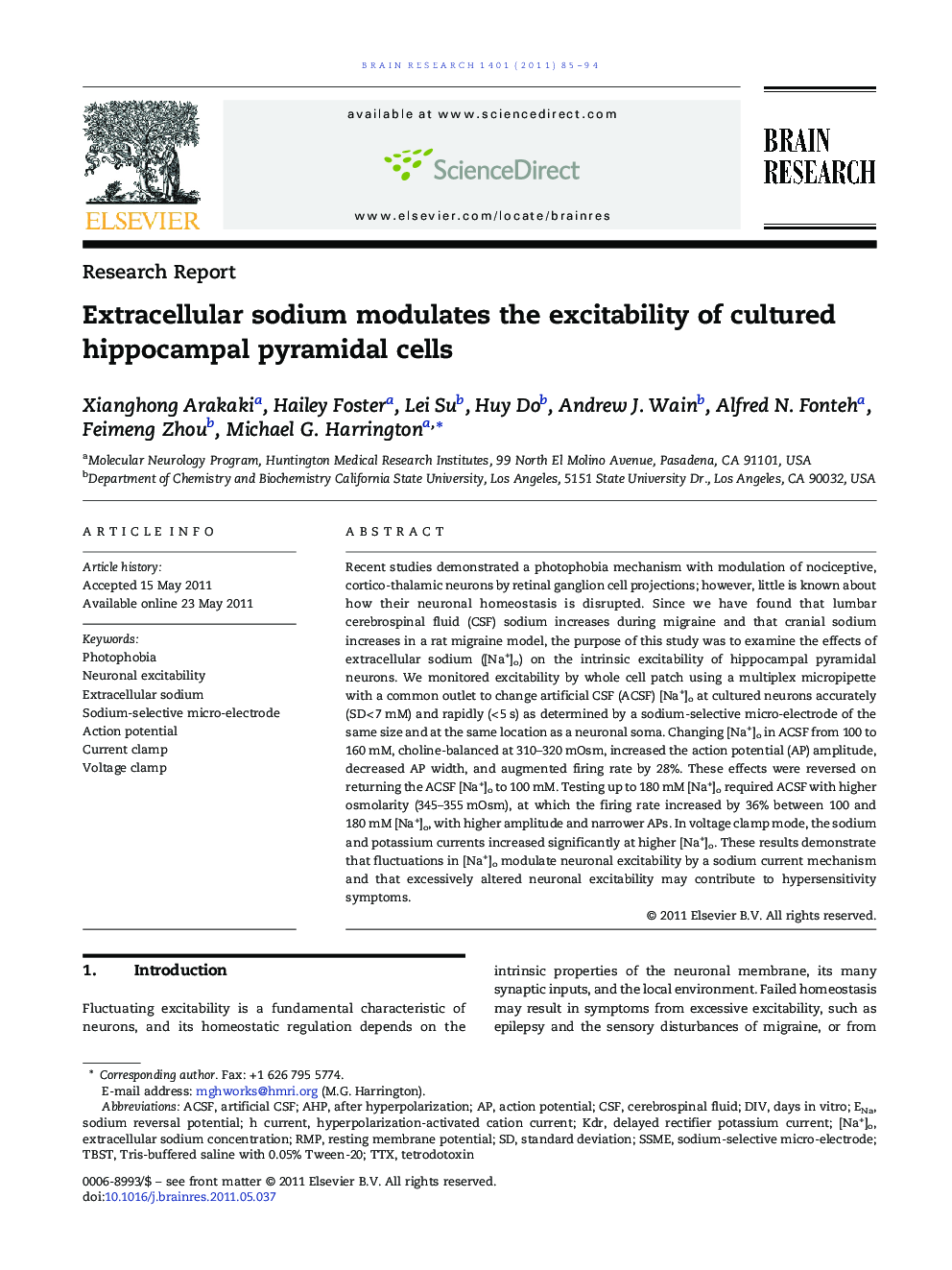| Article ID | Journal | Published Year | Pages | File Type |
|---|---|---|---|---|
| 4325814 | Brain Research | 2011 | 10 Pages |
Recent studies demonstrated a photophobia mechanism with modulation of nociceptive, cortico-thalamic neurons by retinal ganglion cell projections; however, little is known about how their neuronal homeostasis is disrupted. Since we have found that lumbar cerebrospinal fluid (CSF) sodium increases during migraine and that cranial sodium increases in a rat migraine model, the purpose of this study was to examine the effects of extracellular sodium ([Na+]o) on the intrinsic excitability of hippocampal pyramidal neurons. We monitored excitability by whole cell patch using a multiplex micropipette with a common outlet to change artificial CSF (ACSF) [Na+]o at cultured neurons accurately (SD < 7 mM) and rapidly (< 5 s) as determined by a sodium-selective micro-electrode of the same size and at the same location as a neuronal soma. Changing [Na+]o in ACSF from 100 to 160 mM, choline-balanced at 310–320 mOsm, increased the action potential (AP) amplitude, decreased AP width, and augmented firing rate by 28%. These effects were reversed on returning the ACSF [Na+]o to 100 mM. Testing up to 180 mM [Na+]o required ACSF with higher osmolarity (345–355 mOsm), at which the firing rate increased by 36% between 100 and 180 mM [Na+]o, with higher amplitude and narrower APs. In voltage clamp mode, the sodium and potassium currents increased significantly at higher [Na+]o. These results demonstrate that fluctuations in [Na+]o modulate neuronal excitability by a sodium current mechanism and that excessively altered neuronal excitability may contribute to hypersensitivity symptoms.
Research highlights► We cultured rat primary hippocampal pyramidal cells to test how altered extracellular [Na+] affects neuronal excitability. ► We measured acute changes in extracellular [Na+] with a Na+-selective microelectrode. ► Increased extracellular [Na+] from 100 to 180 mM augmented the neuronal firing rate by 36%. ► Na+ and K+ currents increased significantly at higher [Na+]. These results are consistent with earlier reports in other cell types. ► This data may link the elevated [Na+] in migraine to hypersensitivity symptoms.
